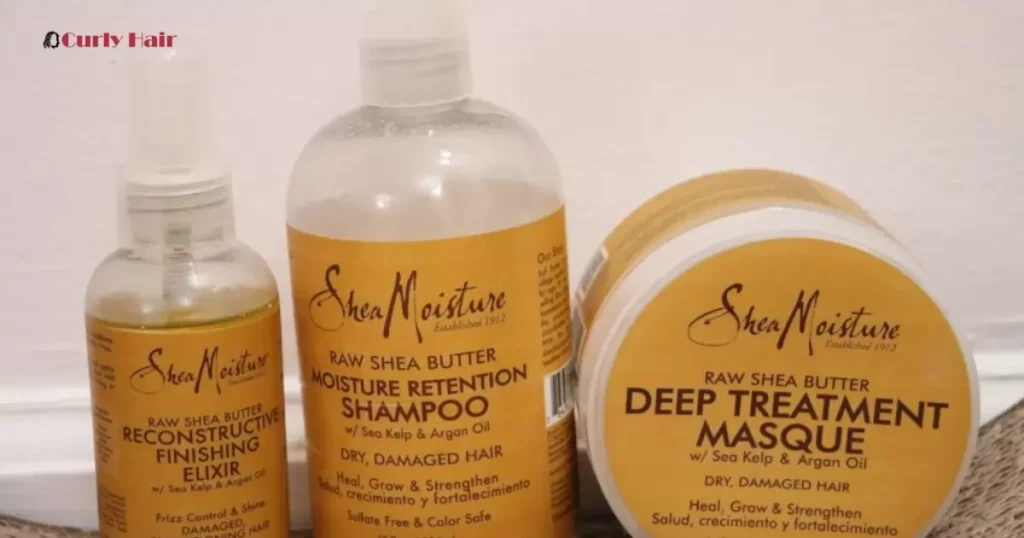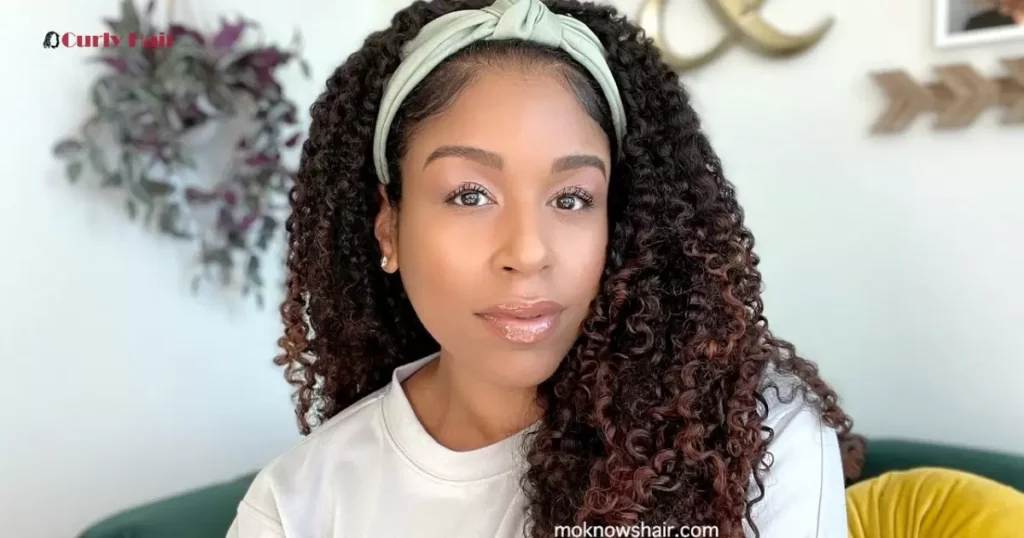Curly hair can be soft with the right care. Moisture is key for healthy curls. Gentle products and methods help maintain softness. Avoiding harsh treatments keeps curls feeling smooth and silky.
Tired of frizzy, dry curls? You’re not alone. Many people wonder, how can I make my curly hair soft? Dealing with rough curls can be frustrating. But don’t worry, there are ways to get the soft curls you dream of.
Your curls are special and deserve the best care. We’ll explore simple ways to make them soft and bouncy. Understanding your hair type is the first step to softer curls. Ready to transform your curly hair? Let’s discover the secrets to soft, healthy curls together!
Key Takeaway
- Use moisturizing products to keep curls soft and manageable.
- Limit heat styling to prevent damage and maintain softness.
- Layer leave-in conditioner, oil, and cream for optimal moisture.
- Avoid over-brushing and use a wide-tooth comb to prevent frizz.
- Select products designed for curly hair to enhance softness and definition.
What Causes Curly Hair Stiffness?
| Cause | Description |
| Lack of Moisture | Dry hair lacks flexibility and can become stiff. |
| Product Build-Up | Residue from styling products can weigh hair down and affect softness. |
| Heat Damage | Frequent use of heat tools can make curls brittle and stiff. |
| Over-Washing | Washing hair too often can strip natural oils, leading to stiffness. |
| Improper Conditioning | Using the wrong conditioner or not conditioning enough can leave hair stiff. |
| Chemical Treatments | Perms or relaxers can alter hair texture, making curls less soft. |
| Genetics | Natural curl patterns and texture can influence how soft or stiff curls are. |
| Environmental Factors | Exposure to harsh weather conditions can affect hair softness and flexibility. |
Curly hair stiffness often results from a lack of moisture. When hair lacks hydration, it becomes dry and brittle. Environmental factors like humidity or exposure to harsh chemicals can worsen the issue. These factors cause the hair cuticles to lift, making the strands rough and rigid.
Using the wrong products can also lead to stiff curls. Products with high alcohol content strip moisture from the hair, leading to dryness. Overuse of protein treatments can make hair feel hard instead of soft. Understanding these causes is essential for maintaining softer, more manageable curls.
Importance of Moisture Retention

Moisture retention is crucial for maintaining healthy curly hair. Without proper moisture, curls can become dry, brittle, and prone to breakage. Regular hydration helps to lock in natural oils, which keep the hair soft and manageable. To retain moisture, it’s important to use hydrating products and follow a consistent hair care routine.
Protecting your hair from moisture loss is key to achieving softness and shine. Avoid washing your hair too often, as it can strip natural oils. Instead, focus on deep conditioning treatments and using a leave-in conditioner. This ensures your curls stay hydrated, reducing frizz and enhancing their natural bounce.
Hydrating Products to Use
When choosing the right products, focus on those that add moisture. Look for conditioners and leave-in treatments with ingredients like shea butter, aloe vera, and glycerin. These ingredients help lock in moisture and prevent dryness. Regular use of moisturizing masks can also make your curls feel soft and manageable.
Opt for sulfate-free shampoos to avoid stripping natural oils from your hair. Curly hair always frizzy, so cream-based stylers work well to keep your curls hydrated and defined. Using a deep conditioner weekly ensures your hair stays soft and healthy. Consistent use of these products will enhance your hair’s softness over time.
Techniques for Applying Moisture
Apply leave-in conditioner to damp hair. It locks in moisture for longer, ensuring softness and shine. Use a deep conditioner once a week. This helps repair damage and keeps curls hydrated and manageable. Seal in moisture with lightweight oil. It forms a barrier, preventing dryness and frizz throughout the day.
Avoid over-washing your hair. Shampoo strips natural oils, so stick to gentle cleansers for retaining moisture.
Should I Avoid Certain Products?
When choosing products, avoid those with heavy silicones and sulfates. Silicones can build up, making hair look dull and feel stiff. Sulfates strip natural oils, leaving curls dry and brittle. Opt for products with natural ingredients that maintain moisture without causing buildup.
Check labels for alcohol and harsh chemicals that can damage curly hair. Alcohol can dry out curls, making them frizzy and hard to manage. Choose gentle, hydrating products designed specifically for curly hair. This will help keep your curls soft and manageable.
What Styling Techniques Help?

To keep curly hair soft, use gentle styling techniques. Apply a leave-in conditioner or light styling cream to damp hair. Use your fingers or a wide-tooth comb to detangle and distribute the product evenly. Avoid tight hairstyles that pull on the hair, causing breakage and stiffness.
Dry your curls with a microfiber towel or a soft cotton T-shirt. This helps reduce frizz and preserves natural curl patterns. Consider using a diffuser attachment when blow-drying to maintain curl definition and minimize heat damage. Regularly trim your ends to prevent split ends and maintain softness.
How to Scrunch Out Crunch?
To remove crunch from your curls, start by using a small amount of leave-in conditioner. Work it through your hair with your fingers, focusing on the ends. Avoid using too much product, as this can weigh your curls down. Gently scrunch your hair with your hands to soften the crunch without disturbing your curl pattern.
For best results, use a soft microfiber towel or an old T-shirt to scrunch your curls. This helps to reduce frizz and keeps your curls defined. Be gentle and avoid harsh rubbing, which can lead to frizz. This technique will leave your curls looking soft and bouncy.
The Scrunching Process Explained
Scrunching is a simple technique to enhance the texture of curly hair. After applying your styling product, lean over and gently scrunch your hair upwards. This helps to define curls and adds volume. Use your hands to lift sections of hair, squeezing gently as you go.
Repeat the scrunching motion until your curls take shape. Avoid using too much force, as this can cause frizz. Dry your hair either by air-drying or using a diffuser on a low setting. Scrunching is key to achieving soft, well-defined curls without creating unwanted crunch.
Tools for Effective Scrunching
To achieve the best results when scrunching curly hair, use the right tools. A microfiber towel is ideal as it absorbs excess moisture without causing frizz. For scrunching, your hands are the most effective tool. Gently cup and squeeze your curls to enhance their natural shape. A wide-tooth comb can help detangle before scrunching to prevent breakage. Use a light touch to avoid disrupting your curl pattern.
A cotton T-shirt can be used as an alternative to a towel. It helps reduce friction and minimizes frizz. If you prefer, a curl-enhancing product can be applied to boost definition. Ensure your hair is damp but not dripping wet for the best scrunching results. Experiment with different tools to find what works best for your curls.
Method of Using Oils for Softness

To use oils for softening curly hair, start with a nourishing oil like argan or coconut. Warm a small amount between your hands and apply it evenly from the roots to the tips. This helps seal in moisture and adds shine. Focus on the ends of your hair where dryness is most common.
For best results, use the oil as a leave-in treatment or deep conditioning mask. Apply the oil, then cover your hair with a shower cap. Leave it on for at least 30 minutes before rinsing. This method makes your curls softer and more manageable.
What Is the LOC Method?
The LOC method is a popular technique for moisturizing curly hair. It stands for Liquid, Oil, and Cream. First, apply a liquid like water or leave-in conditioner to damp hair. Next, use an oil to lock in the moisture. Finally, apply a cream to seal everything in and add extra softness.
This method helps keep curly hair hydrated and manageable. Each step builds on the last to prevent dryness. By following these steps, your hair will stay soft and well-moisturized. This routine is simple yet effective for maintaining healthy, curly locks.
Tips for Overnight Care
For overnight care, use a silk or satin pillowcase to reduce friction. Cotton can absorb moisture and cause frizz. Before bed, apply a leave-in conditioner to keep curls hydrated. Gently braid or twist your hair to minimize tangling while you sleep.
Consider using a silk or satin hair bonnet to protect your curls. This helps maintain moisture and prevents breakage. Avoid using tight hair ties that can damage your curls. These simple steps can keep your hair soft and healthy overnight.
5 Tips On How To Fix And Make Hair Less Frizzy

To fix frizzy hair, use products designed for dryness and frizz. Wash your hair gently, using a sulfate-free shampoo to avoid stripping moisture. Avoid excessive heat from styling tools, which can worsen frizz. Opt for fabrics like satin instead of cotton to prevent friction. Finally, brush your hair sparingly to keep it smooth and avoid tangles.
1. Use Products For Dry And Frizzy Hair Instead Of Home Remedies
For managing dry and frizzy hair, choose products designed for these issues. These products are formulated to lock in moisture and reduce frizz. Home remedies may not provide consistent results or enough hydration. Use shampoos, conditioners, and treatments specifically made for dry, frizzy hair to see better improvement.
2. Wash Your Frizzy Hair In The Correct Way
To wash frizzy hair properly, use a mild, sulfate-free shampoo. Wet your hair with lukewarm water, not hot. Apply shampoo gently, focusing on the roots, and avoid scrubbing. Rinse thoroughly and follow with a hydrating conditioner. Avoid washing your hair too often to prevent dryness.
3. Watch Out For Overusing Heating Tools
Using heating tools too often can damage your hair and increase frizz. Limit the use of flat irons, curling wands, and blow dryers. When you do use them, always apply a heat protectant first. Allow your hair to air dry whenever possible to reduce heat exposure.
4. Avoid Cotton Fabric
Avoid using cotton fabric on your hair as it can cause frizz. Cotton towels create friction, which leads to split ends and flyaways. Instead, use a microfiber towel or a soft cotton T-shirt to dry your hair. These alternatives reduce friction and help keep your hair smooth.
5. Don’t Brush Your Hair Too Often

Brushing your hair too often can cause frizz and breakage. Limit brushing to reduce friction and protect your hair’s natural oils. Use a wide-tooth comb or your fingers to detangle gently. This approach helps keep your hair smooth and less prone to frizz.
Frequently Asked Questions
How to properly wash curly hair?
Use a sulfate-free shampoo and warm water to cleanse your curls without stripping moisture. Follow with a moisturizing conditioner and avoid overwashing to maintain hydration.
How to hydrate curly hair?
To hydrate curly hair, use a deep conditioning treatment regularly. Apply leave-in conditioner to keep curls moisturized throughout the day.
How to get silky curls?
To get silky curls, use a moisturizing conditioner and avoid heat styling. Apply a curl-enhancing product and let your hair air-dry for smooth, defined curls.
Conclusion
In conclusion, achieving soft, manageable curls starts with understanding what causes stiffness and frizz. Hydration is key, so use products designed for moisture retention and apply them correctly. Avoid over-brushing and harsh heat treatments that can damage your curls. Incorporating oils and using the LOC method can enhance softness and smoothness.
By following these tips, you can transform your curls into soft and silky locks. Proper washing, conditioning, and gentle handling are essential for maintaining healthy curls. Embracing these practices will help you achieve the soft, defined curls you desire.











